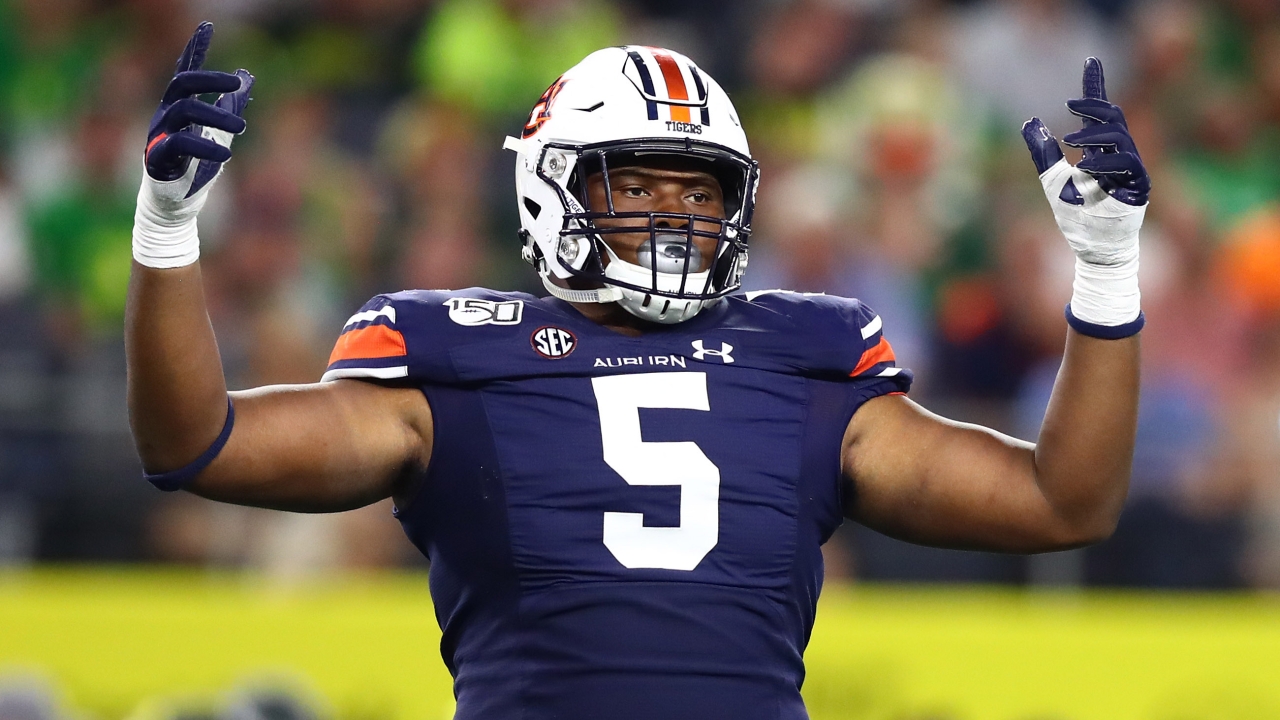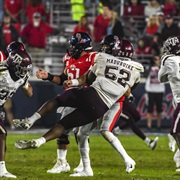
Holding the Line: SEC's dominance up front continues with six first-round linemen
The Southeastern Conference is known as a “line of scrimmage league.” Perhaps it should be called an “employment line of scrimmage league.”
Offensive and defensive linemen aspiring to play professionally in the National Football League develop best and prepare best in the SEC.
Competing in the SEC only enhances linemen’s prospects of reaching the NFL. It also raises the odds of being selected with prime selections in the NFL Draft.
Thursday night reinforced that point as six of the 11 offensive and defensive linemen selected in the first round of the draft were from SEC programs — Georgia offensive tackles Andrew Thomas and Isaiah Wilson, Alabama tackle Jedrick Wills, Auburn defensive tackle Derrick Brown, South Carolina defensive tackle Javon Kinlaw and LSU defensive end K’Lavon Chaisson.
That at least doubled the number taken from the other Power 5 conferences. The Big Ten produced three. The ACC and Pac-12 each had one. The Big 12 had no linemen taken in the first round.
Indeed, since Texas A&M joined the league in 2012, the SEC has produced 78 offensive and defensive linemen selected in the first three rounds of the draft. The Big Ten has the second-most in that span with 47.

The SEC figures to increase that total when the draft continues on Friday night with the second and third rounds.
Texas A&M defensive tackle Justin Madubuike, Auburn defensive end Marlon Davidson, LSU center Lloyd Cushenberry, LSU offensive tackle Saahdiq Charles and Missouri defensive tackle Jordan Elliott are among SEC linemen projected to be selected on the second day of the draft.
No doubt, those statistics will be used by Texas A&M and other SEC programs when recruiting elite linemen in Texas like Houston tackle Donovan Jackson, Katy offensive lineman Bryce Foster, Richmond tackle Reuben Fatheree, Texarkana defensive end Landon Jackson and Duncanville offensive lineman Savion Byrd.
If there is no question that the SEC produces more NFL caliber linemen, then perhaps the obvious question is, “why?”
SEC Network College Football Analyst Cole Cubelic, who played on the offensive line at Auburn, has an answer. Or, really, answers. They begin with the different style of play in conferences that rely more on finesse than physicality.
“Number one, the emphasis on the line of scrimmage in this league has been there for a while,” Cubelic said. “You go to the Pac-12 and some stuff Oregon was doing for a while and what Washington State was doing with (coach Mike) Leach. And you looked at what the Big 12 turned into with all the ‘Air Raid’ stuff. The emphasis doesn’t fall (on the line of scrimmage).
“The SEC went straight ground and pound when A&M came into the league. Now, things are opening up. Teams might want to spread you out, but they still run at you, too. You’ve got to stop the run. There will always be an emphasis in this league to run the football and an emphasis on being able to stop the run.”
Another reason for the SEC superiority in linemen might be as basic as biscuits and gravy or red beans and rice.
“I think, geographically, there are more bigger athletes in SEC footprint than in most of the country,” Cubelic said. “In Alabama, Florida, Mississippi, Texas, Louisiana and Tennessee, there are more jumbo athletes … guys that are 290, 300, 310 pounds that can move. I don’t know why that is, but I think recruiting will tell you that’s accurate.”
According to 247sports.com’s 2020 recruiting rankings, 13 of the nation’s Top 25 offensive tackle recruits and 14 of the top defensive end were from the SEC footprint.
Another factor in developing SEC linemen is the adage that iron sharpens iron. Premier offensive tackles are going against premier defensive ends on a nearly weekly basis. Sometimes just in practice.
“The best way to be the best is to compete against the best,” Cubelic said. “If you’re a defensive end in the East Division, you played against Andrew Thomas and Isaiah Wilson. If you played in the West, you go against Saahriq Charles and Jedrick Wills.
“When you come into this league, you’re going to play against the best. There’s no other way to prove you should be a first-round draft pick than to play against a first-round draft pick.”
